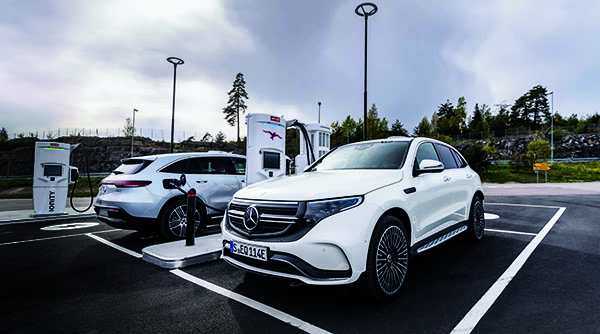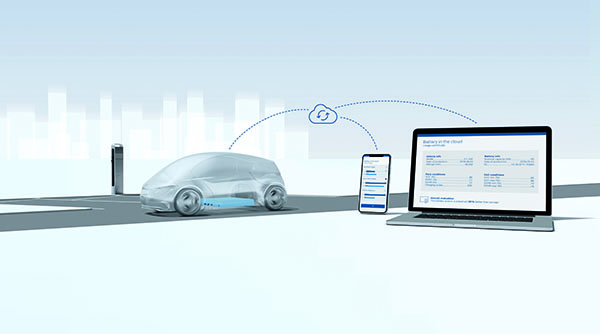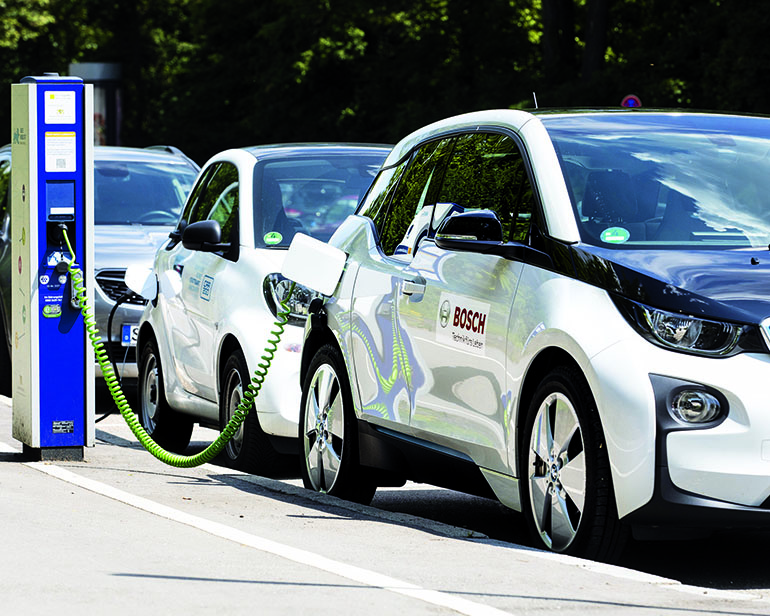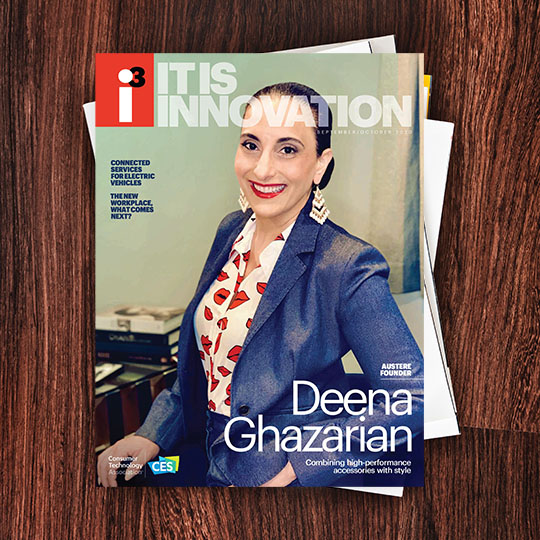

The baseline connected service for EV owners coordinates the vehicle’s charging either at home or at a public facility operated by an automaker such as Tesla or a network like Electrify America.
Artur Seidel, vice president, Americas, at Elektrobit in Bothell, WA, says, “For the initial use case of charging you already have to put in the infrastructure — in the architecture, in the backend, cloud connectivity — to enable that.” So, for automakers, “now you’re in a situation where you can try things, introduce things, modify things and update things.” He suggests, for example, the ability to offer digital coupons for a retailer with a location near the charging station where an EV is located in the moment. He points to Tesla enabling Netflix streaming to its vehicles, to keep users entertained while their cars are recharging. “They keep introducing connected services but they always feel like part of one solution,” he adds.
Elektrobit, headquartered in Erlangen, Germany, supplies embedded and connected software products and services for the automotive industry. It is contributing a new software platform for Volkswagen’s new ID family of EVs, designed to have a persistent connection to the internet via an automotive cloud.
The new platform enables high-performance computing via centralized HPCs (high-performance controllers) rather than an architecture comprising many individual electronic control units (ECUs), for greater computational efficiency. One of those centralized HPCs is a “gateway module” that “essentially enables these connected services,” Seidel explains. “The point is [VW] didn’t go for an incremental approach. They fully understand that for an EV to reach its full potential it needs this kind of truly connected, truly scalable platform,” he says.
Connectivity serves to both reduce the total cost of ownership of electric vehicles and significantly personalize a vehicle, by freeing machine learning algorithms to harness data, says Carolin Reichert, vice president of connected mobility solutions for EVs at Robert Bosch GmbH in Stuttgart, Germany. She spotlights, Bosch’s “Battery in the Cloud” service first shown last year and slotted for commercialization this year, along with the company’s Convenience Charging service that debuted in 2019.
Because batteries lose capacity as they age, Bosch devised “Battery in the Cloud” as a way to extend a battery’s life by connecting it with a cloud-based data-analytics system that supplements an EV’s own built-in battery management system. The connected service acquires data from the EVs battery remotely, either via an SDK (software development kit) integrated into the vehicle or by a “cloud-to-cloud interface to the [automaker’s] cloud,” Reichert says. Then, “in the cloud, we are running our algorithms based on a hybrid model approach,” she explains. “We are combining electrochemical models from the battery with physics-based models and AI (artificial intelligence) based models. With that we can first do anomaly detection of the battery,” detecting problems, and “we can do an aging prediction,” she says. “And third, we have an algorithm to optimize the lifetime of the battery by calculating the optimized charging curve in the cloud.”
What’s more, “we can use data from the entire fleet, not only from one vehicle,” Reichert says. “We adapt the charging curve depending on the real aging of the battery.” The process is hidden from the EV owner, but the net result is prolonged battery life, by as much as 20%.
Battery in the Cloud in turn supports two subsidiary connected services: battery lifetime monitoring for fleet owners, which could include ridesharing or ride-hailing services stocked with EVs; and a “battery usage certificate” attached to a vehicle, helping sellers and buyers to determine the vehicle’s resale or trade-in value.
Bosch’s Convenience Charging service — presently offered via the company’s own app in Europe and available to automaker’s as a “white label” product they would brand themselves — encompasses data-driven features, too. Besides range prediction and route planning based on a greater than usual amount of information gleaned from the vehicle, plus access to charging networks, billing and home charging functions, Reichert says, users can plan a route considering the best price for charging along the way and includes a new “guardian angel” function that warns the driver when the vehicle has only enough power to get to the charging station ahead.

“For sure connectivity brings an increased appeal to EV, making the switch from legacy ICE vehicles more seamless, reducing the range anxiety, and also allowing access to favorable conditions provided by automakers like FCA for public and domestic charging,” says Marco Belletti, a spokesman for Fiat Chrysler Automobiles (FCA) in Turin, Italy. Belletti says it began selling seven EVs globally this year: Jeep Renegade, Jeep Compass, Jeep Wrangler, Fiat E-Ducato, the second-generation Fiat 500e, and Maserati’s first hybrid.
Nevertheless, FCA’s strategy isn’t limited to its products. “Creating an ecosystem of partnerships is critical to providing customers with a full end-to-end experience of ownership for EVs,” Belletti says. “Finally, we also need to [consider] how technical data from connected vehicles can become a source of data also for smart cities and the public sector.”
In June, FCA announced a partnership with Otonomo, an automotive data services platform provider based in Herzliya, Israel. Otonomo takes anonymized, aggregated data from an automaker’s fleet of vehicles and makes it available to third-party application and service providers, who in turn offer their wares to the vehicle owners. FCA’s agreement with Otonomo covers selected connected vehicle models across the European Union and is expected to expand as new connected vehicles are released.
Last year, FCA also announced a partnership with Terna, an electricity provider in Italy, to study how EVs interact with the power grid (electricity distribution network). It leverages an experimental two-way charging infrastructure built in Turin’s Mirafiori district, letting EVs return power to the grid when electricity demand is high and take power for vehicle charging when demand is low.
“There is a lot to come and it’s all based on connectivity,” says Mathias Vaitl, head of Mercedes Me and digital services at Daimler AG in Stuttgart, Germany. “We want to make it more convenient to drive a battery car than a combustion car.”
By 2021, Vaitl says, Mercedes-Benz will release filtering, reservations and an availability forecast for charging. The first lets a navigation route be set to include a preference, such as a coffee shop, when and where a charge is expected to be needed. The second books a charging session for a specific date and time at a particular location. And the last informs the user the best time to start driving, to arrive at a charging station when it’s not busy. The automaker is in discussions with charging networks about the reservations option, Vaitl says.
Volvo, which has pledged to have BEVs compose 50% of its vehicle lineup by 2025, has formed a partnership with Google, whose Android Automotive OS is bringing new connected services to those vehicles’ infotainment systems — beginning with the Polestar 2 car and Volvo’s XC40 Recharge P8 BEV SUV, which arrive at U.S. dealerships this year. Android Automotive OS is an open source platform that enables over-the-air (OTA) updates to connected services such as Google Maps, Google Assistant and Google Play Store, as well as third-party Android apps for autos. Both vehicles are the first from Volvo capable of receiving both software and OS updates OTA. (Polestar is Volvo’s all-electric subsidiary brand.)
“They are a big step forward in terms of electric vehicles, but also a big step forward in terms of connectivity and connected services, and of course that’s not a coincidence,” says Martin Kristensson, head of digital business at Volvo Cars in Gothenburg, Sweden.
Connectivity and connected services is “a rapidly moving space with unrealized potential at this point,” says Stuart Taylor, executive director of enterprise connectivity at Ford Motor Co. in Dearborn, MI. So Ford has many developments in progress, using various data and communications channels ranging from in-vehicle experiences to apps and online. “The app and the vehicle are becoming a single view of the world,” says Taylor.
“It’s about purposeful technology, not just tech for tech’s sake. We should be solving challenges, problems and pain points, and then enhancing the experience because of that,” Taylor declares. “Once you’ve got a connected vehicle, your imagination is pretty much unlimited. You can do so much with these cars then.”

I3, the flagship magazine from the Consumer Technology Association (CTA)®, focuses on innovation in technology, policy and business as well as the entrepreneurs, industry leaders and startups that grow the consumer technology industry. Subscriptions to i3 are available free to qualified participants in the consumer electronics industry.